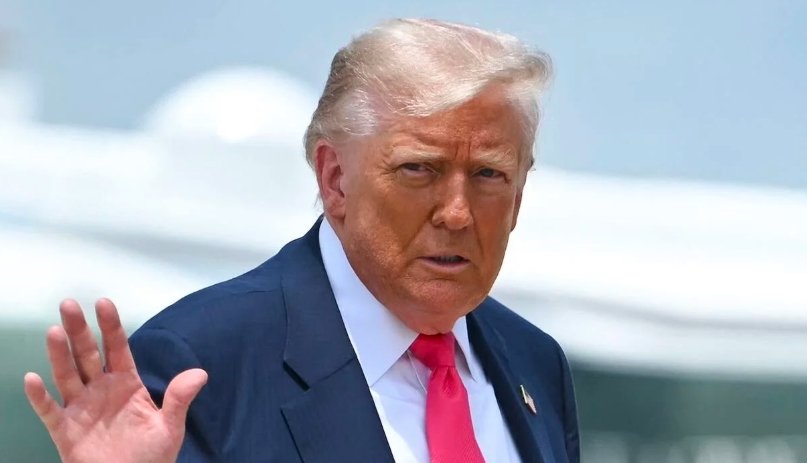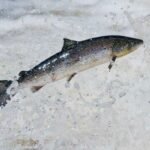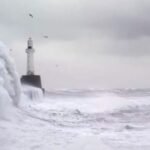A political fight just crossed the Atlantic — and one of America’s most powerful newspapers got left behind. The White House has barred the Wall Street Journal from President Trump’s upcoming trip to Scotland following a report linking him to Jeffrey Epstein. The move has sparked a fresh clash between press freedom and presidential power.
Trump Takes Aim at the Press — Again
The drama centers on a controversial story published by the Journal last week. The paper reported that Trump, in 2003, allegedly sent a suggestive note to disgraced financier Jeffrey Epstein for his 50th birthday — a note the former president now claims is a forgery.
Trump responded with legal fire: a $10 billion defamation lawsuit against the Journal, calling the birthday letter “fake, disgusting, and completely fabricated.” His campaign has since escalated the fight by excluding the paper from the presidential press pool for the second leg of his European tour.
And this time, it’s personal.

A Strange Letter and a Storm of Denials
The alleged letter, described as “bawdy yet cryptic,” was part of an investigative feature examining Trump’s ties to Epstein, who died by apparent suicide in 2019 while facing federal charges for sex trafficking minors.
The Wall Street Journal report did not assert that Trump committed a crime. But the publication of the birthday note reignited scrutiny over Trump’s social ties to Epstein in the early 2000s, including photos of the two men at parties in Mar-a-Lago and Manhattan.
Trump insists the letter is a fabrication, and his legal team has already filed suit seeking $10 billion in damages from Dow Jones & Company, the Journal’s parent firm.
Just one sentence here.
The Journal, meanwhile, stands by its reporting and says it followed rigorous editorial procedures. “We have no reason to believe the material is inauthentic,” an editor close to the story said.
Scotland Trip Scramble: Reporter Yanked, Statement Issued
Until late last week, Wall Street Journal reporter Tarini Parti was scheduled to cover the Scotland portion of Trump’s trip as part of the small White House press pool — a rotating group of journalists allowed close access during travel.
That changed abruptly.
“Due to the Wall Street Journal’s fake and defamatory conduct, they will not be one of the thirteen outlets on board,” said Press Secretary Karoline Leavitt in a statement to Politico. “Every news organization in the entire world wishes to cover President Trump, and the White House has taken significant steps to include as many voices as possible.”
It’s worth noting: Parti had no involvement in the Epstein story.
The White House’s move is being viewed by many as retaliation — a message not just to the Journal, but to any media outlet thinking about poking the bear.
Not the First Blacklist — But the Stakes Are Higher Now
This isn’t uncharted territory. Trump has clashed with major media outlets before — from banning CNN reporters at pressers to pulling credentials from The Washington Post. But blacklisting a mainstream outlet from international travel aboard Air Force One over a single story is raising new alarms.
During previous administrations — including Trump’s own first term — the press pool was treated as an institutional necessity, not a privilege. While the president could certainly complain about stories, reporters were rarely removed without significant cause.
Some White House correspondents worry this could signal a shift toward more selective, partisan press access.
One-sentence paragraph. It matters.
“This is a disturbing precedent,” said a senior member of the White House Correspondents’ Association, speaking anonymously. “It implies that editorial independence could cost journalists the ability to cover the presidency.”
Legal Fight or Political Theater?
The $10 billion lawsuit Trump filed may be splashy, but legal experts are skeptical of its teeth.
“It’s almost certainly a stunt,” said media law professor Julia Roth at NYU. “The bar for proving defamation against a public figure in the U.S. is extremely high. You need to show actual malice — that the publisher knew it was false or had reckless disregard for the truth.”
So far, there’s no public evidence the Journal acted recklessly. And with no known involvement from the reporter barred from the trip, the punishment seems aimed more at optics than accountability.
Still, in the court of public opinion — especially among Trump’s loyal base — a lawsuit against the so-called “fake news media” plays well.
Here’s what the public needs to keep in mind:
-
Journalistic pool assignments are traditionally made by the White House Correspondents’ Association, not the president.
-
Barring a major outlet can trigger broader press solidarity — as happened during past Trump-era spats with CNN and BuzzFeed.
-
A story that gets a reporter kicked off Air Force One tends to get more attention, not less.
Scotland and the Shadow of Epstein
President Trump’s trip to Scotland is, officially, a policy and personal visit — a mix of high-level meetings and time at his Turnberry golf resort. But the shadow of the Epstein scandal now looms large over the trip.
While the Journal won’t be on board, its story is following the president wherever he goes.
In Scotland, local press is already asking whether Trump’s exclusion of U.S. media will affect international transparency. The UK’s own media watchdogs have raised concerns about political retaliation against the press — especially in cases involving legal threats.
Meanwhile, the press pool replacement for the Wall Street Journal has not been announced, but speculation is that it will go to a Trump-friendly outlet, possibly Newsmax or The Epoch Times.
A Chilling Effect or a Rallying Cry?
The bigger issue here isn’t just one newspaper getting sidelined.
It’s what this means for press freedom in a high-stakes election year — and for the role of journalists in holding powerful figures accountable, even when it’s uncomfortable.
“The message this sends is: ‘Cover us the way we want, or don’t cover us at all,’” said one White House journalist, visibly frustrated.
Yet for many reporters, that’s a reason to press even harder.
Because when stories like this get buried, the public is left in the dark. And that, more than anything, is the real threat.


















